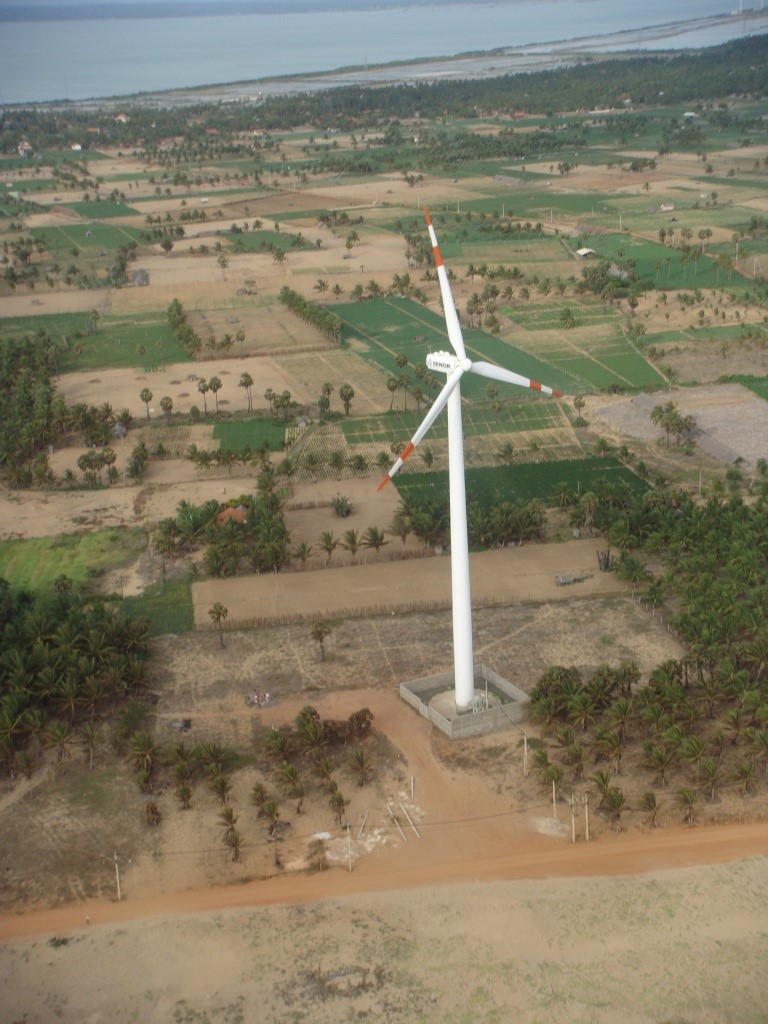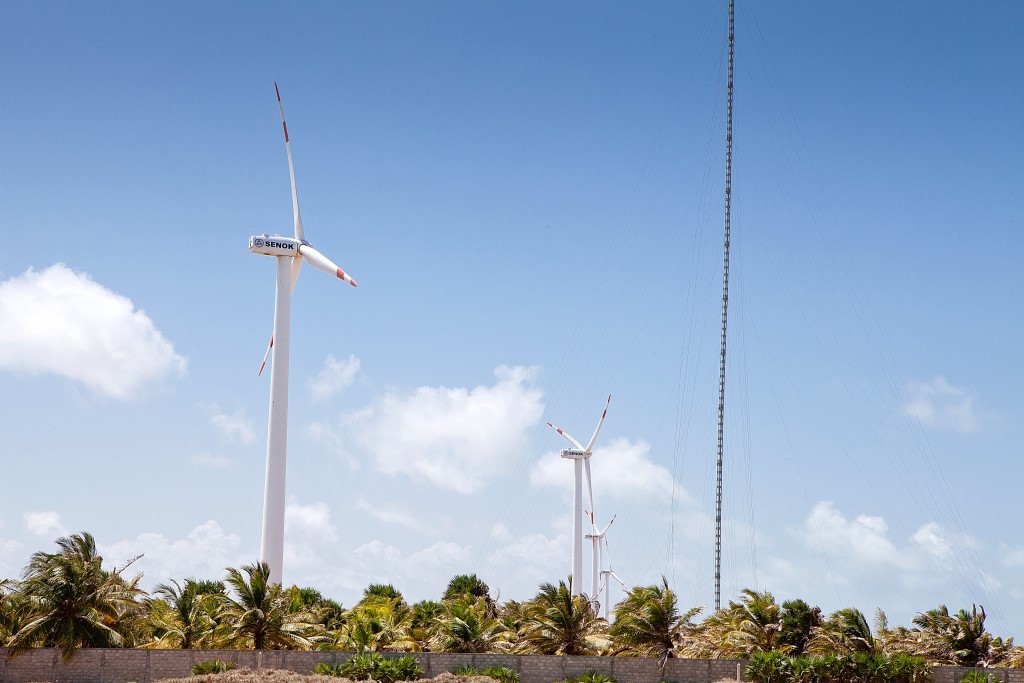Wind power in Sri Lanka
By using the wind energy potential on the northwest coast of Sri Lanka, significant amounts of CO2 can be saved per year. As part of the construction of the wind farm, roads and buildings were built for public use.
When the 10-megawatt wind farm – the first privately operated wind farm in Sri Lanka – went into operation in 2010, it set an important signal for climate-friendly generation from renewable energies. Until now, the island nation’s power grid has been supplied mainly from thermal plants based on fossil fuels such as diesel, oil, naphtha, and coal. Now, with eight wind turbines, Mampuri-I feeds more than 27 gigawatt hours of clean electricity into the grid each year.
New road network improves mobility
In the region on the northwestern coast, people make their living mainly from fishing and agriculture. In the course of the wind farm construction, the infrastructure, which had previously consisted of sand roads, was expanded: The new road network significantly increases the mobility of the inhabitants. In addition, a preschool, a playground, and a church were built, among other things.
Ecological effects:
-
- First 10-megawatt wind farm in Sri Lanka
- Important signal for renewable energy generation: So far mainly supply from thermal plants generating electricity based on fossil resources (diesel, crude oil, and coal))
- CO2 savings of approximately 18,768 tons of CO2 per year
Positive social and economic side effects:
- Optimization of on-site infrastructure: Construction and maintenance of roads and access roads by the project owner
- Continuous promotion of social institutions and initiatives in exchange with the local population
- Information events for students to familiarize them with the technology and the scope of the project






